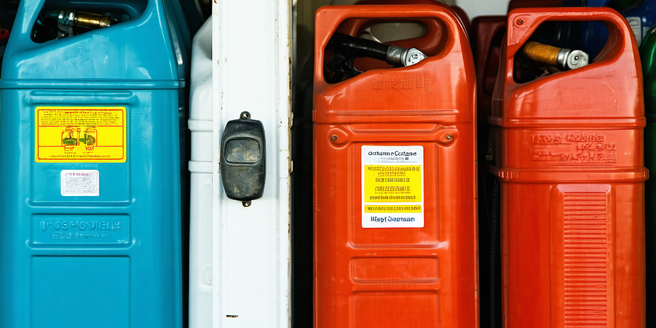
Understanding Gasoline Types and Their Properties
Understanding the different types of gasoline and their properties is crucial for safe handling and storage. Gasoline is generally classified by its octane rating, which measures the fuel’s ability to resist knocking during combustion. Higher octane fuels are designed for engines that operate at higher compressions, whereas lower octane is suitable for standard engines. The choice of gasoline directly impacts engine performance, efficiency, and overall lifespan. Each type of gasoline may contain various additives that affect its stability and longevity. Therefore, when storing gasoline, it is essential to use the appropriate type for your specific needs. Misusing or mixing different octane levels can lead to engine problems. Understanding these distinctions helps ensure that gasoline is stored properly, minimizing risks related to deterioration and contamination.
Safety Measures for Storing Gasoline at Home
Storing gasoline at home requires strict adherence to safety measures to prevent accidents. Always use approved containers that are specifically designed for gasoline storage. Store containers in a well-ventilated area, away from living spaces and direct sunlight to reduce the risk of fire hazards. It is important to keep gasoline out of reach of children and pets. Regularly check containers for leaks or damage and replace them if necessary. Additionally, refrain from smoking or using any ignition sources near gasoline storage areas. Be aware of local regulations regarding the amount of gasoline you are permitted to store at home. By following these safety guidelines, you can greatly reduce the risk of accidents and ensure a safe environment for your household.
Choosing the Right Containers for Gasoline Storage
Selecting the right containers for gasoline storage is essential for safety and efficiency. The containers must be made from materials that can withstand gasoline’s corrosive nature, such as high-density polyethylene or metal with a protective lining. Look for containers that are approved by regulatory bodies and bear a marking indicating their certification for gasoline storage. These containers often include features like spill-proof spouts and child-resistant caps to improve safety. It is important to ensure that the container’s seal is intact to prevent vapors from escaping, which can be hazardous and lead to degradation of the gasoline. Containers should be stored in a cool, dry place, and they should also be clearly labeled with the fuel type for easy identification. Proper container choice enhances safety and extends gasoline’s shelf life.
Ideal Locations for Safe Gasoline Storage
Finding the ideal location for gasoline storage at home is vital for minimizing risks. Store gasoline in a dedicated, well-ventilated area, such as a detached garage or shed, away from living spaces. It is crucial to ensure the storage location is cool and dry, as heat and moisture can accelerate gasoline degradation and increase flammability risks. Keep the storage area free of flammable materials and ensure it is equipped with a fire extinguisher. Avoid storing gasoline in basements or enclosed areas where vapors could accumulate without proper ventilation. Labels and warning signs can alert family members to exercise caution around the storage area. By carefully choosing the storage location, you can significantly reduce potential hazards associated with gasoline storage.
Inspecting and Maintaining Stored Gasoline
Regular inspection and maintenance of stored gasoline are critical to maintaining its quality and safety. Check containers periodically for any signs of damage, leaks, or corrosion. Ensure that the containers remain properly sealed to prevent evaporation and contamination. Use a fuel stabilizer to extend the gasoline’s shelf life, especially if you do not plan to use it within a few months. It’s important to rotate your gasoline supply, using the oldest stock first, to prevent it from becoming stale. Stale gasoline can damage engines and reduce performance, so using or replacing it promptly is essential. Keeping a log of purchase and storage dates helps manage your supply efficiently. Routine inspections ensure that stored gasoline remains safe and effective for future use.
Disposing of Old or Contaminated Gasoline Safely
Proper disposal of old or contaminated gasoline is essential to prevent environmental harm and maintain safety. Never pour gasoline down the drain, on the ground, or in the trash, as it can cause pollution and pose a fire hazard. Instead, locate a local hazardous waste disposal facility or a community collection event that accepts gasoline. These services ensure that gasoline is disposed of in an environmentally responsible manner. If transportation is required, ensure that gasoline is secured in approved containers to prevent spills. Contact local waste management authorities for specific guidelines on disposal, as regulations can vary by location. Safe disposal not only protects the environment but also reduces the risk of accidents associated with improper handling of gasoline.
